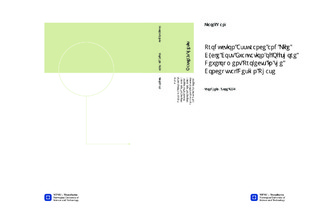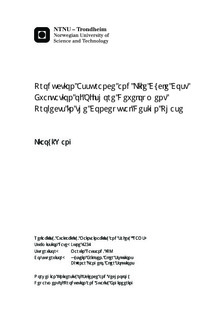| dc.description.abstract | RAM analysis is used to assess system availability in the oil and gas industry. As the concept design for reliability is getting attention throughout various industries, RAM analysis has become a mandatory delivery in the conceptual design phase. LCC analysis aims at predicting acquisition cost and ownership cost during the project life cycle. Since the ownership cost is derived from operation and maintenance, which can be potentially much higher than the acquisition cost, so that quantifying the ownership cost is the main objective of a LCC analysis. Combing RAM and LCC analyses in the conceptual design phase helps the trade-off between maximizing regularity and minimizing expenditure before entering into the detailed engineering phase. However, the conceptual design phase is rather short, and therefore a simple model is a key to the feasibility of performing the two analyses. An ongoing project from Aker Solutions has been carried out in this thesis as a case study to perform both RAM and LCC analyses. The analytical and the simulation approaches are the two common approaches to RAM analysis. In general, the analytical approach is rigid by using predefined formulas. It may be easy to apply in the conceptual design phase, but rather weak at handling large and complex systems. In contrary, the simulation approach is more flexible and capable. By simulating, more detailed and accurate results can be generated. Several software tools have been developed for both approaches. They are briefly discussed with pros and cons. Rather than saying one tool is superior to the other, it is more important to know which tool to use in the specific application. Since Aker Solutions has close cooperation with Statoil, Miriam Regina is used in Aker Solutions to perform the simulation approach. A number of LCC-related standards have been developed. Although many theoretical issues have been discussed, a complete LCC analysis is hardly found in the literatures. This may be due to confidential issues, lack of practical guidance and knowledge limitation in the project's early phase. Considering the variance of different projects, it is somehow unrealistic to develop a universal method for LCC analysis. In this thesis, a six steps procedure is illustrated with explanation of each step. Based on the NORSOK standards, an Excel spreadsheet is established, and demonstrated in the case study. Sensitivity analysis offers the possibility of comparing alternative solutions. By incorporating sensitivity analysis into RAM and LCC analyses, the alternative solutions are examined related to both regularity and cost dimensions. Usually, in the conceptual design phase, the sensitivity analysis is used to reveal the impact of changes in the component configuration or process design, which in turn guide system optimization. Uncertainties are found in three areas, parameter, model and completeness. It is however impossible to quantify uncertainties. In order to reduce uncertainties, it is important to obtain reliable data, use appropriate model, and document assumptions. In the case study, by using Miriam Regina, RAM analysis provides the production availability and ranks the subsystems/components according their criticality. LCC analysis is applied with the Excel spreadsheet, which calculates the acquisition cost and the ownership cost for the proposed options. Through the case study, the feasibility of performing RAM and LCC analyses in the conceptual design phase has been proved. | nb_NO |

